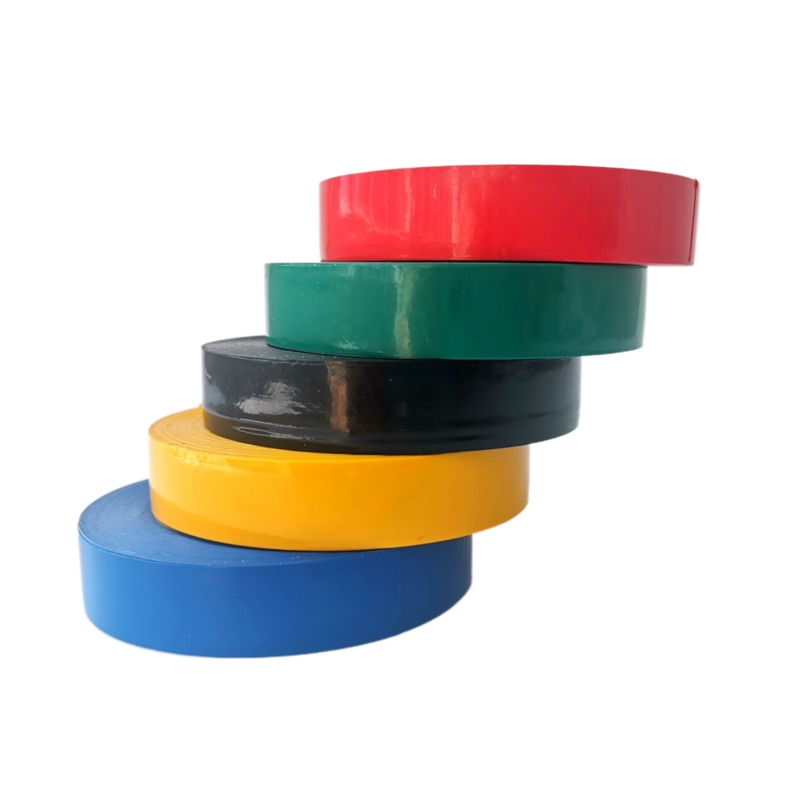Fiberglass Tape for Electrical Insulation An Overview
Fiberglass tape is a specific type of insulation material that is widely used in various electrical applications. Renowned for its remarkable properties, it serves as an effective barrier against electrical currents while also providing resistance to extreme temperatures, moisture, and other environmental factors. In this article, we will explore the composition, benefits, and applications of fiberglass tape for electrical insulation, as well as its importance in modern electrical systems.
Composition
Fiberglass tape is primarily made from woven glass fibers that are coated with resin or adhesive material. This combination provides significant structural integrity and excellent electrical insulating properties. The glass fibers impart strength and flexibility, while the resin enhances adhesion and moisture resistance. Depending on the intended application, fiberglass tapes may vary in thickness, width, and adhesive properties to suit specific requirements.
Benefits
1. High Dielectric Strength One of the most significant advantages of fiberglass tape is its high dielectric strength. This property allows it to withstand considerable voltage without conducting electricity, making it ideal for use in various electrical insulation applications.
2. Temperature Resistance Fiberglass tape can withstand extreme temperatures, often ranging from -50°C to +200°C (-58°F to 392°F). This thermal stability ensures that the tape will not degrade or lose its effectiveness even in high-heat environments, which is crucial for electrical components that generate heat.
3. Moisture and Chemical Resistance The tape's composition allows it to resist moisture and various chemicals. This resistance is essential in environments where electrical equipment may be exposed to water or corrosive substances, as it prevents insulation failure.
4. Mechanical Strength The woven nature of fiberglass tape provides it with excellent mechanical strength. This durability is essential for applications that involve movement or vibration, ensuring that the tape remains intact and continues to provide effective insulation.
5. Lightweight and Flexible Fiberglass tape is lightweight and flexible, allowing it to conform to different shapes and sizes. This flexibility is important when wrapping around irregularly shaped components or when additional insulation is needed in tight spaces.
fiberglass tape for electrical insulation

Applications
Fiberglass tape is employed in various electrical and industrial applications, including
- Insulation for Wires and Cables One of the primary uses of fiberglass tape is for insulating electrical wires and cables. It acts as a protective layer that prevents short circuits and electrical leakage while maintaining performance even under harsh conditions.
- Transformer Insulation In transformers, fiberglass tape is used to insulate windings and prevent insulation breakdown. Its thermal and dielectric properties help ensure the transformer operates efficiently and safely.
- Motor Windings Fiberglass tape is often used in the insulation of motor windings, where it can handle high temperatures and moisture, maintaining motor performance and longevity.
- Repair and Maintenance The tape is also a favored choice for electrical repairs. In situations where wires are exposed or damaged, fiberglass tape can quickly and effectively wrap and seal these areas, providing a temporary or permanent fix.
- Heat Shields In environments where electrical components are exposed to high temperatures, fiberglass tape can serve as a heat shield, protecting sensitive parts and ensuring reliability.
Conclusion
In conclusion, fiberglass tape is an essential material in the realm of electrical insulation. Its combination of high dielectric strength, temperature resistance, and durability makes it a top choice for various applications, from insulating wires and cables to protecting transformer windings. As modern electrical systems continue to evolve, the demand for reliable and effective insulation solutions will only grow. Fiberglass tape stands at the forefront, offering versatile performance that meets the challenges of increasingly advanced technological environments. It is an indispensable tool in ensuring the safety and efficiency of electrical systems across industries.
-
XIANGFAN Rubber Tape-Ultimate Solutions for All Your Insulation NeedsNewsJun.24,2025
-
XIANGFAN Rubber Tape-Protection for Industrial and Residential ApplicationsNewsJun.24,2025
-
XIANGFAN Rubber Tape: Superior Safety and Sealing for Demanding EnvironmentsNewsJun.24,2025
-
XIANGFAN Rubber Tape: Reliable Solutions for Every Electrical ChallengeNewsJun.24,2025
-
XIANGFAN Electrical & Industrial Tape: Powering Reliability Across IndustriesNewsJun.24,2025
-
XIANGFAN Electrical & Industrial Tape: Excellence in Every ApplicationNewsJun.24,2025
